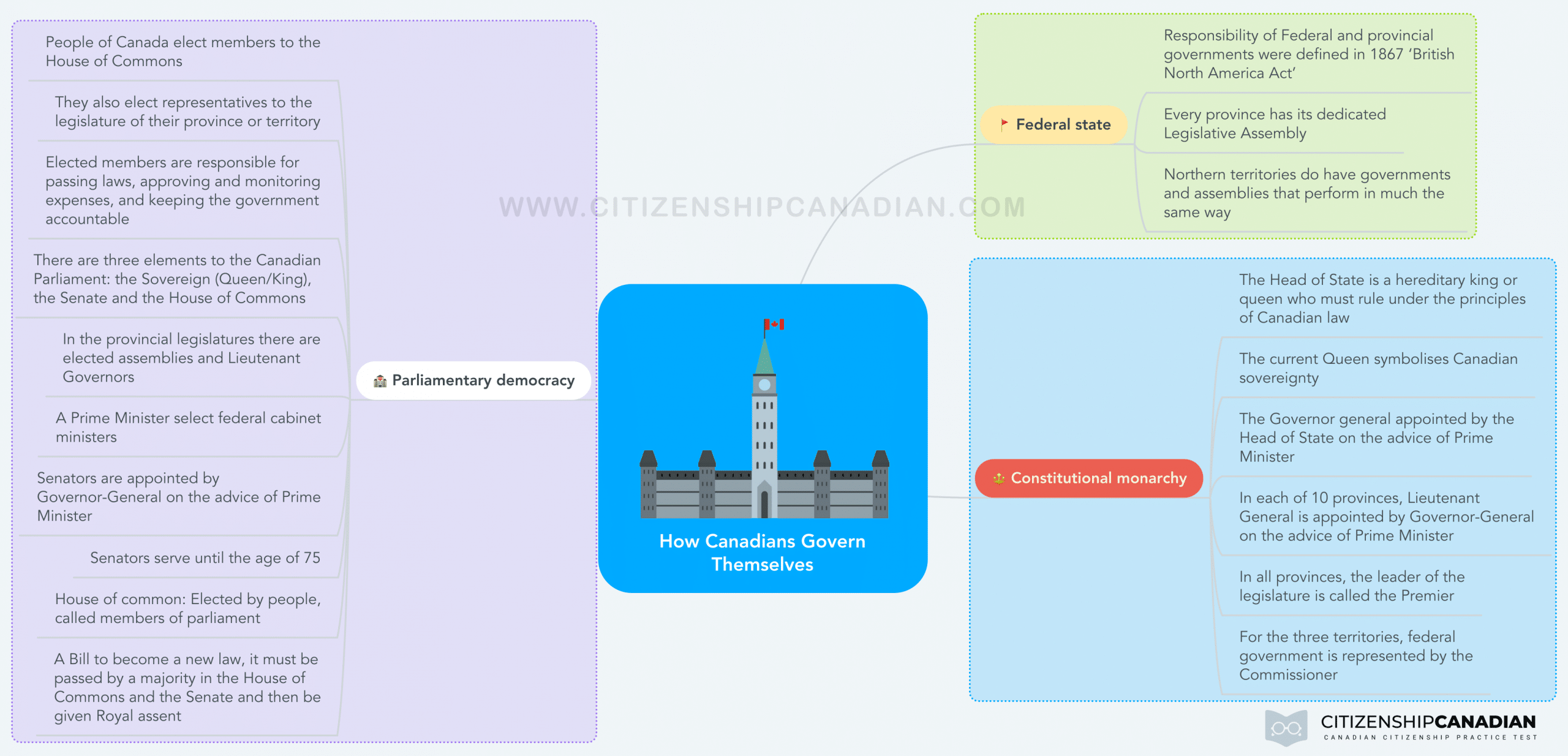1 Federal state
1.1 Responsibility of Federal and provincial governments was defined in 1867 ‘British North America Act.’
1.2 Every province has its dedicated Legislative Assembly
1.3 Northern territories do have governments and assemblies that perform in much the same way
2 Constitutional monarchy
2.1 The Head of State is a hereditary king or queen who must rule under the principles of Canadian law
2.2 The current Queen symbolises Canadian sovereignty
2.3 The Governor-general appointed by the Head of State on the advice of Prime Minister
2.4 In each of 10 provinces, Lieutenant General is appointed by Governor-General on the advice of Prime Minister
2.5 In all provinces, the leader of the legislature is called the Premier
2.6 For the three territories, the federal government is represented by the Commissioner
3 Parliamentary democracy
3.1 People of Canada elect members to the House of Commons
3.2 They also elect representatives to the legislature of their province or territory
3.3 Elected members are responsible for passing laws, approving and monitoring expenses, and keeping the government accountable
3.4 There are three elements to the Canadian Parliament: the Sovereign (Queen/King), the Senate and the House of Commons
3.5 In the provincial legislatures, there are elected assemblies and Lieutenant Governors
3.6 A Prime Minister select federal cabinet ministers
3.7 Senators are appointed by Governor-General on the advice of Prime Minister
3.8 Senators serve until the age of 75
3.9 House of common: Elected by people, called members of parliament
3.10 A Bill to become a new law, it must be passed by a majority in the House of Commons and the Senate and then be given Royal assent

